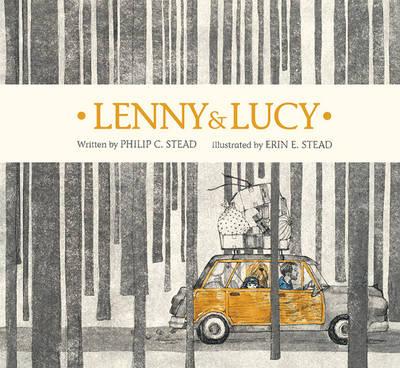Lenny and Lucy by Philip C Stead

Ill. by Erin E. Stead. Allen and Unwin, 2016. ISBN 9781760292119
(Age: 4+) Highly recommended. Moving home, Friendship, Family life,
Overcoming fear, Loneliness. What a delight! A car piled high with
belongings makes its way through a forest of tall trees. Dad
driving, a young wide eyed boy and his dog sit in the back seat. The
cover says so much. The boy and his Dad are moving house, but just
the two, with a dog, inviting all sorts of questions from
readers. The trees crowd the little car but as the trees thin out
their destination is reached, and the car trundles over a wooden
bridge to their new home. Harold and Peter stare out over the bridge
at night and are frightened by what they see. The forest could hide
anything. The next day they take a pile of pillows and blankets to
the bridge and build Lenny, the Guardian of the Bridge. He guards
the bridge well, but Peter sees that he needs company, so the next
day he and Harold build a companion for Lenny. Peter and Harold play
marbles with the two guardians, and eat their vegetables together,
aware that they are now safe.
One day Millie from next door comes over to show Peter the owl. The
group now consists of five and together they watch the owl. The
woods no longer seem fearful.
Beautifully illustrated, the tale of a young boy coming to terms
with change, of learning to cope with fear, of being resilient, will
appeal to all readers, as they recognise situations they have all
experienced, and learn from Peter's behaviour, that fear can be
managed.
This pair wrote and illustrated one of my favourite books, A
sick day for Amos McGee, a Caldecott Medal winner, and Erin's
illustrative technique is deceptively simple. The few colours used
against a mainly white and sometimes grey backdrop, suit the story
beautifully, adding to the threatening feel of the forest with those
tall straight trunked trees. Fascinatingly the trees are almost like
prison bars when Peter looks out of the window, but with overcoming
his fear, the trees take less and less space on the page, until on
the last page they are almost all gone. I could go on, as the
illustrations are to be looked at over and over again, supporting
and extending the sparse text.
Fran Knight